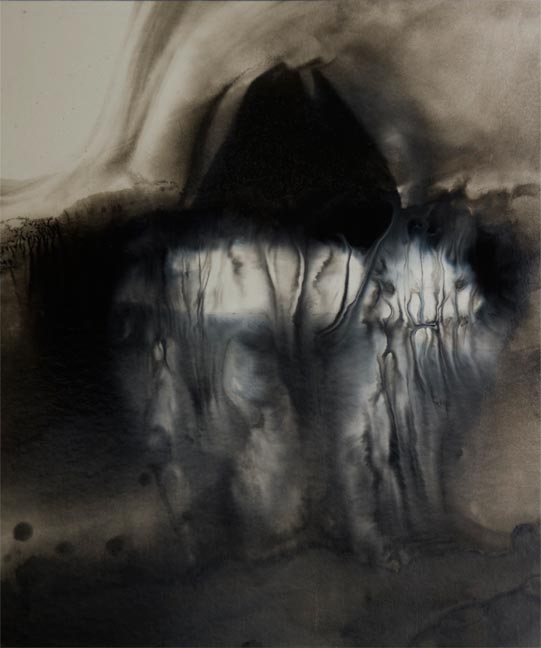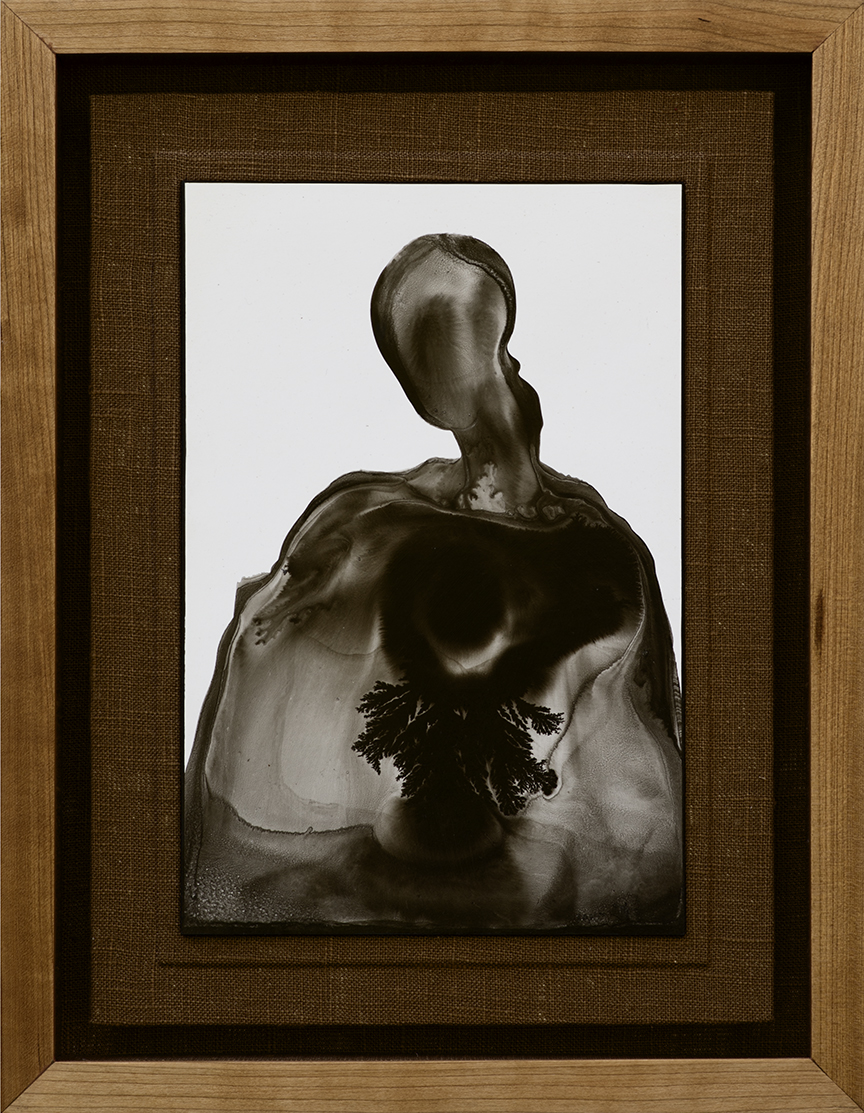Enclosed below, please find a set of images descriptive of the exhibit of monochromatic paintings being held during the month of December at the art space of the Community Art Partnership of Tompkins County in Ithaca, New York. It includes a few shots of the installation of the central piece of the show (a piece that gathers over one hundred unframed paintings) and of the limited edition book that is also part of the exhibit. Each hand-bound, numbered, and signed copy of this book (BEYOND OURSELVES - Mental Conditioning by Experience and the Future of Humanity), has an original ink painting attached to the cover and includes four brief essays pertaining to the central theme of the exhibit. (Each book costs $30.00, and there are less than 20 copies left now. Get in touch with me here to secure yours.)
The brief text below is the code that best deciphers the meaning and intent of this body of work. You can find it at the CAP Art Space as a handout.
Art is artifice. Like all other languages or forms of symbolic expression, art is a mere representation of something else and, as such, artificial, not actual, never the thing itself. However, since languages are all we have to communicate and, hopefully, to commune with one another, we must persevere, ever alert to the pitfalls and limitations of whatever medium we choose for that purpose. I must add to that general caveat yet another word of caution. Given its theme —life as the common ground of our existence— and the glaring paucity of its means, the communication intent of this particular art exhibit is ambitious to the point of folly. If I feel that the risk of failure is justified, it is only because of the importance of the matter at hand, and the hope that, if I manage to enlist your forbearance and sensitivity, we may meet one another in a direct, not conceptual, glimpse of what makes us one.
What blocks our perception of the stream of life is that it flows undivided, and therefore almost entirely beyond the reach of the human intellect, fragmented and conditioned as it is by the predetermined, contradictory, and ever insufficient forms of representation (ideologies) with which every cultural group and every separate individual identifies. You may quite rightfully ask, why even dream that a collection of little paintings, a crass caricature of the dynamic integrity of existence, could help anyone break through this ancient this wall of mental alienation? Well, one crucial and pressing reason to attempt such seemingly impossible task is that, if we do not find the way to somehow see life as our common ground, the idea-based division and conflict that has already tormented the human species for millennia will just continue to wreak havoc in “our” lives. What is worse, in our own time the destructive power of the prevailing ideological distance between us —the rotten fruit of our common alienation from the wholeness of life— has gone from being a source of ongoing affliction to a credible political, demographic, ecological, and nuclear threat to the very survival of the species.
The most sensible way to approach the undivided and infinitely complex dynamism of life (and our mysterious presence in it) is by carefully exposing, and then negating all the factors that keep us in a state of alienation and contradiction. The book of essays that accompanies this exhibit attempts this negative approach. It does so by critically examining how the accumulation of particular experience (knowledge) gathered by the organism about itself and the world, generates a false sense of separate and self-projecting existence that externalizes and atomizes everything it comes in contact with its tribally endorsed and egocentric thought and desire. However, for the exhibit itself I have chosen to be far less sensible, and attempt a direct visualization of the wholeness of life.
I must repeat that this piecemeal and static pictorial representation is inappropriate for the task of unmasking the falseness and danger of cultural and psychological separation. My only hope is that its revelation of the human presence deeply embedded within the flow of pigment and medium so crudely mimicking the unbroken stream of being, may just manage to trigger your capacity to see yourself, not as a particular instance of a general phenomenon of mental conditioning, but as life itself.
We have been quite forcefully taught to be isolated and weighted down by the limitations and absurd obligations that come with the claim to a unique identity and a separate existence based on different and exclusive forms of secular and religious knowledge. The truth is, however, none of us has ever been, or will ever be, anything other than organismic manifestations of a vital and undecipherable mystery that is our only common ground —our innermost essence and natural place for the most intimate and beautiful encounter there is.
The exhibit title, Beyond Ourselves, suggests that much. Life is not a collection of interacting things, and therefore not reducible to knowledge, let alone opposed forms of knowledge constitutionally incapable of solving the increasingly difficult personal, interpersonal, regional, and global problems besetting us. Life is all there is, and to see that is, in itself, the end of separation with all its travails, frustrations, and sorrows. There is no greater blessing than the realization of our seamless presence in the all-inclusive vitality that seems to better witness and love itself by holding, at every instant, all of us, and the rest of living beings, together.
A word about the artwork and a suggestion for viewer participation
Ingredients: The emptiness of opaque black pigment and the transparent nothingness of water or linseed oil.
Procedure: When these ingredients are dragged or pushed about with different tools or the naked hand, their chaotic combination yields an infinity of form, some of it recognizable to the conditioned intellect, some not. The resulting painting is just the record on paper or board of what actually happened as the painting was made.
Participation of the humanoid responsible for this artwork: Besides the procurement of the ingredients and the implementation of the painting process, my involvement is, at best, minimal. When the miracle of a pure painting happens to come along, it is because I hardly had anything to do with it, other than being fully present in its inception. Acknowledgement of the surprising occurrence, and gratitude is all that is necessary, then. It is far more common, however, that some cleaning up or further manipulation is necessary to bring out, through the use of brush, pencil, or scraper, some form already present in the trace initially left by the moving mixture of pigment and medium. At worse, the intellect’s compulsion to impose its knowledge or realize its expectations wins out. When this happens, a not very interesting original painting becomes the base for a more personal creation that one can only hope is not too incoherent with the general appearance and intent of the body of work in which it is included.
Many paintings end up in the discard bin, which is not a bad thing. Either they eventually find their way to their final rest in the trash, or are cut up in smaller, and often quite beautiful and suggestive fragment that can be used to make cards or decorate books.
Viewer participation: There are two useful ways to approach this exhibit. The most direct one is to quickly find and lose yourself in its metaphorical depiction of the indivisible, and therefore ever unknowable stream of life. The other is to use it to come intensely in touch with your particular sense of existential isolation, and once there question its veracity until your (and everyone else's) seamless inclusion in the mysterious embrace of life, becomes evident.




























